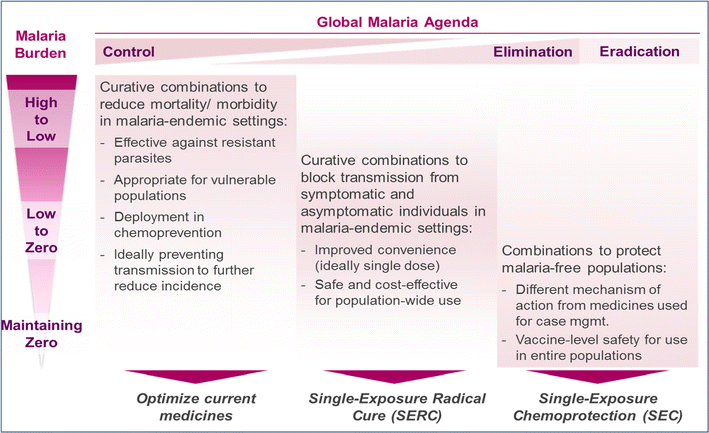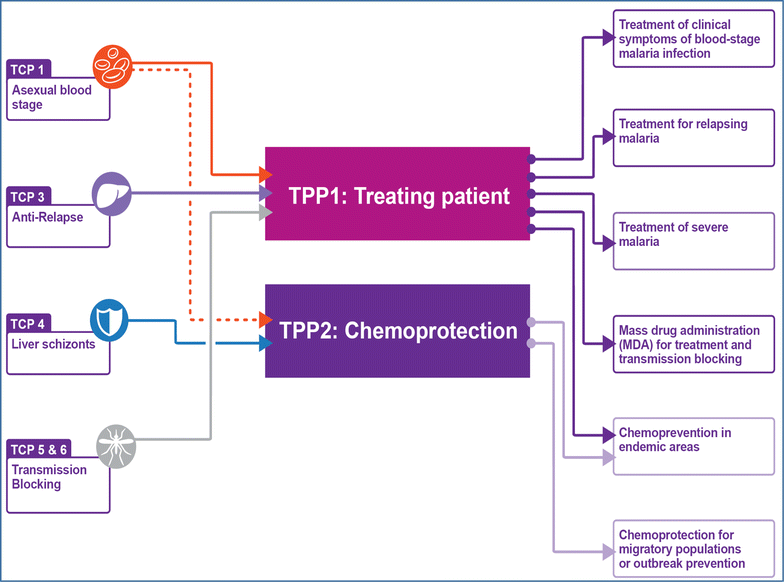New developments in anti-malarial target candidate and product profiles
- PMID: 28086874
- PMCID: PMC5237200
- DOI: 10.1186/s12936-016-1675-x
New developments in anti-malarial target candidate and product profiles
Erratum in
-
Erratum to: New developments in anti-malarial target candidate and product profiles.Malar J. 2017 Apr 18;16(1):151. doi: 10.1186/s12936-017-1809-9. Malar J. 2017. PMID: 28420400 Free PMC article. No abstract available.
Abstract
A decade of discovery and development of new anti-malarial medicines has led to a renewed focus on malaria elimination and eradication. Changes in the way new anti-malarial drugs are discovered and developed have led to a dramatic increase in the number and diversity of new molecules presently in pre-clinical and early clinical development. The twin challenges faced can be summarized by multi-drug resistant malaria from the Greater Mekong Sub-region, and the need to provide simplified medicines. This review lists changes in anti-malarial target candidate and target product profiles over the last 4 years. As well as new medicines to treat disease and prevent transmission, there has been increased focus on the longer term goal of finding new medicines for chemoprotection, potentially with long-acting molecules, or parenteral formulations. Other gaps in the malaria armamentarium, such as drugs to treat severe malaria and endectocides (that kill mosquitoes which feed on people who have taken the drug), are defined here. Ultimately the elimination of malaria requires medicines that are safe and well-tolerated to be used in vulnerable populations: in pregnancy, especially the first trimester, and in those suffering from malnutrition or co-infection with other pathogens. These updates reflect the maturing of an understanding of the key challenges in producing the next generation of medicines to control, eliminate and ultimately eradicate malaria.
Keywords: Elimination drug discovery; Eradication drug discovery; Malaria; Medicines; Plasmodium; Target candidate profile; Target product profile.
Figures



References
-
- WHO. World Malaria Report 2015. Geneva, World Health Organization, 2015. http://www.whoint/malaria/publications/world-malaria-report-2015/report/en/. 2015.
-
- WHO. Global Technical Strategy for Malaria 2016–2030. Geneva, World Health Organization. http://www.whoint/malaria/areas/global_technical_strategy/en/. 2016.
-
- USFDA. Guidance for industry and review staff target product profile—a strategic development process tool. Draft guidance. http://www.fdagov/downloads/drugs/guidancecomplianceregulatoryinformatio.... 2007.
Publication types
MeSH terms
Substances
LinkOut - more resources
Full Text Sources
Other Literature Sources
Medical
Molecular Biology Databases
Research Materials

